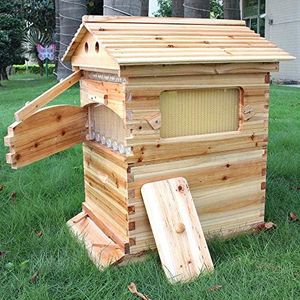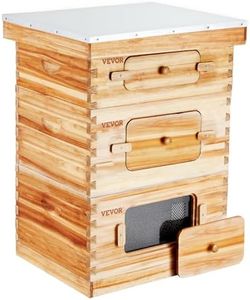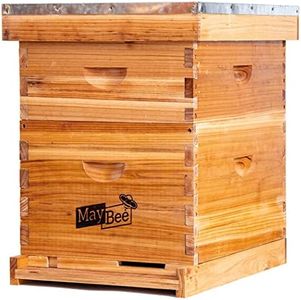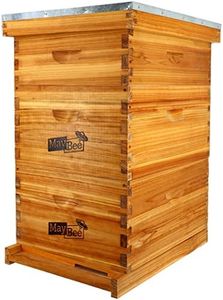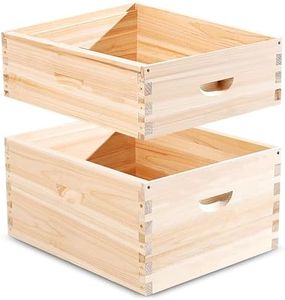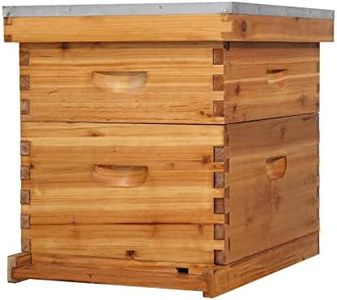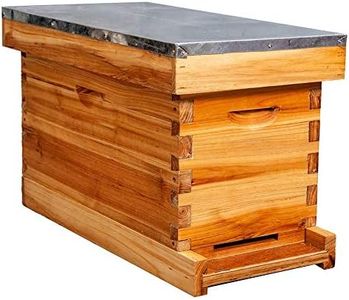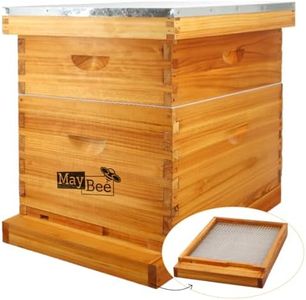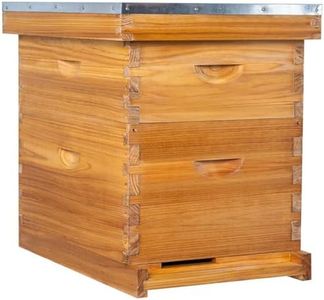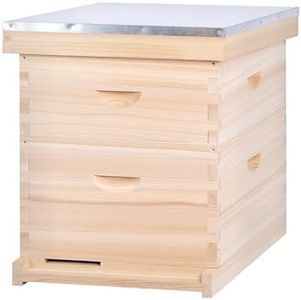We Use CookiesWe use cookies to enhance the security, performance,
functionality and for analytical and promotional activities. By continuing to browse this site you
are agreeing to our privacy policy
10 Best Beehive Starter Kit
From leading brands and best sellers available on the web.By clicking on a link to a third party's website, log data is shared with that third party.
Buying Guide for the Best Beehive Starter Kit
Starting with beekeeping can be an exciting and rewarding journey, but it is important to choose the right beehive starter kit to ensure your first steps are successful. A starter kit typically includes everything you need to begin: the hive itself, protective gear, and sometimes basic tools. Picking the right kit means considering your local environment, ease of use, and your own commitment level. It's wise to start simple so you can learn comfortably, and then expand as you gain experience. Remember, your well-being and the wellbeing of the bees are top priorities.Hive TypeThe hive type determines the structure in which your bees will live, and affects how you manage your colony. There are several common types—like Langstroth, Top Bar, and Warre—each with pros and cons. Langstroth hives are popular for their stackable, easy-to-inspect frames; Top Bar hives offer a simpler horizontal design; Warre hives aim to mimic nature more closely. As a beginner, consider a Langstroth if you want standard equipment and easier learning, or a Top Bar for less heavy lifting. Think about your physical ability, how much honey you want to harvest, and local advice before deciding.
Number of Boxes (Supers)Boxes, also called 'supers', are stacked vertically on many hive types and determine the colony's living and honey storage space. Starter kits typically come with one to two, but hive systems can grow as your colony expands. Fewer boxes mean a lighter, more compact setup but limit honey production, while more boxes allow more growth and storage but add weight and complexity. Choose a kit with enough room for a strong colony but not so much that it's hard to manage as a beginner—a single deep box or a deep plus a medium is usually a safe place to start.
Frame Type and NumberFrames are removable structures inside the boxes where bees build their comb. Some frames come with a foundation (a pre-formed sheet to guide comb building), while foundationless frames allow bees to build more naturally. A typical hive box holds 8 to 10 frames. Foundation frames are easier for beginners since they guide the bees and make inspections simpler, but foundationless options require more care and provide more natural comb. As a new beekeeper, frames with foundation are a good way to get started, focusing on a full set included in the kit.
Protective GearProtective gear keeps you safe from stings and helps you feel calm while working with bees. Basic gear includes a veil or hood, gloves, and sometimes a full suit. The level of coverage ranges from just a head net to full-body suits. Those confident with insects might be comfortable with less, but beginners should prioritize safety. A full suit with gloves and a sturdy veil is usually best when starting out, only reducing gear as experience and confidence grow.
Included ToolsBeehive kits may come with useful tools like a hive tool (for prying boxes apart), a bee brush (for gently moving bees), a smoker (to calm bees), and a feeder for providing food. Some kits offer just the basics, while others provide a fuller set. More tools make tasks easier and help you care for your bees well, but also mean more to learn. As a beginner, ensure your kit has a hive tool, smoker, and veil at minimum. Extra tools are helpful but not always essential at the very start.
Assembly and Material QualityBeehive boxes are commonly made of wood, often requiring some simple assembly. The type of wood (like pine or cedar) and quality of construction impact durability and weather resistance. Some kits come pre-assembled; others require you to put the box and frames together. Beginners may prefer pre-assembled kits to avoid mistakes, but assembling yourself can build useful skills. Choose a kit made from sturdy, untreated wood and decide if you're comfortable with a little DIY or want something ready to use out of the box.
Instructions and SupportGood starter kits should include clear instructions and possibly guidance on beekeeping basics. Some also offer links to online communities or customer support. The level of instruction varies—some have detailed booklets, others little more than diagrams. If you're brand new, look for a kit with thorough instructions or access to educational resources, ensuring you feel confident as you set up and care for your hive.
